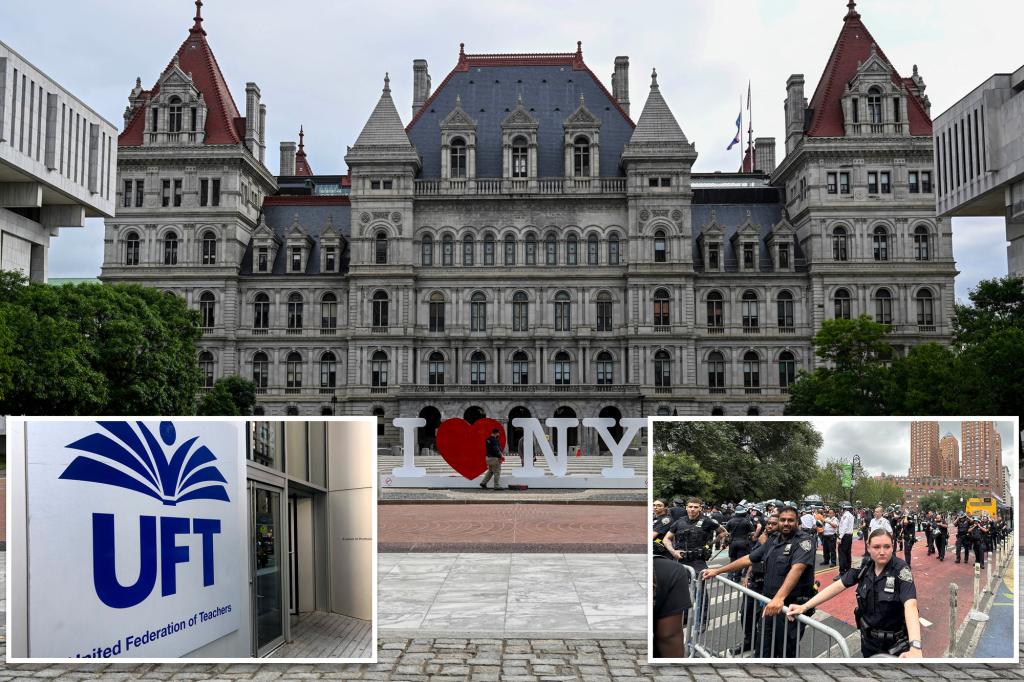State lawmakers in New York are considering changes that would make it easier for teachers, police officers, and other state and local government workers to increase their pensions, with taxpayers likely having to foot the nearly $4 billion bill. The proposed change, backed by Albany politicians and unions in an election year, could cost New York City taxpayers an additional $163 million annually in pension costs, according to an analysis by the Empire Center for Public Policy. The change would impact the pensions of workers largely based on their final three years of salary instead of the current five years, potentially resulting in higher pensions.
Democrats in the Assembly and state Senate are proposing to boost pensions for state and local government employees hired after 2012, known as “Tier 6” members, through the ongoing budget process. The proposal would retroactively increase pensions for workers who retired in the past two years and raise future pensions for about half of New York’s public-sector workforce as they retire. Former Gov. Andrew Cuomo implemented Tier 6 changes a decade ago to address rising pension costs, as lawmakers are unable to cut benefits for government workers once they are hired.
The proposed pension changes could add $2.2 billion in debt to New York City’s pension plans and $1.5 billion to the New York State and Local Employees Retirement System in the coming decades. Teachers with higher salaries would be among the biggest beneficiaries of the proposed changes. Union leaders, including United Federation of Teachers president Michael Mulgrew, are pushing for the adjustments. Mulgrew defended the changes as necessary for providing retirement security to workers, despite concerns raised by critics about the impact on taxpayers and pension costs.
Legislators like Assembly Education Committee Chairman Michael Benedetto are expressing concerns about the Tier 6 pension changes, stating that it could make it harder to recruit and retain teachers in New York City public schools. However, there is debate over whether the proposed changes are truly needed to address recruitment and retention issues or if they are simply a giveaway to unions ahead of the 2024 elections. The proposals have been introduced by state Sen. Robert Jackson and Assemblywoman Stacey Pheffer Amato, with support from Senate Majority Leader Andrea Stewart-Cousins and Assembly Speaker Carl Heastie.
Governor Kathy Hochul, who has the authority to block the pension-padding measure in budget negotiations, has not taken a firm stance on the issue. During her 2022 re-election campaign, Hochul agreed to roll back some pension changes sought by unions, reversing laws from 2010 and 2012 that required new government workers to be vested in the pension system after 10 years instead of five. New York is known for offering generous government benefits, including provisions that allow elected officials to collect pensions while still working, as seen with Staten Island’s District Attorney Michael McMahon and state Judge Judith McMahon.
Overall, the proposed pension changes in New York have sparked debate among lawmakers, unions, and taxpayer advocates over the potential cost implications and impact on public-sector workers. While union leaders argue that the changes are necessary to provide retirement security to workers, critics are concerned about the financial burden being placed on taxpayers and the long-term sustainability of the pension system. As the debate continues, it remains to be seen how the proposed changes will be addressed in the final budget negotiations and how they will impact government workers, taxpayers, and the state’s fiscal outlook.


